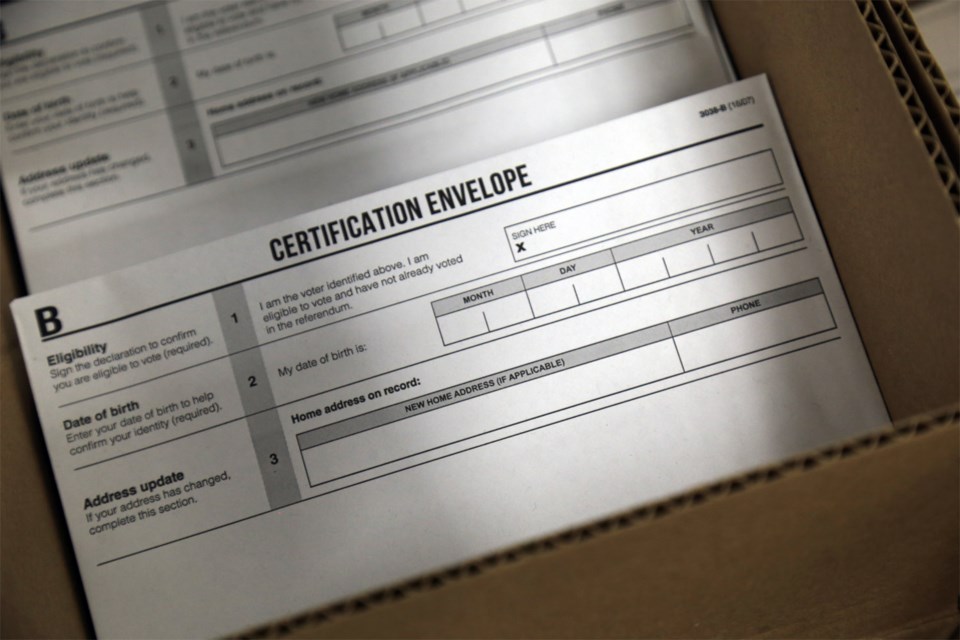The two grand political coalitions that have governed this province almost 70 years may well fall apart, or at the very least go through quite a dramatic transformation, if the switch is made to a proportional representation model of electing MLAs.
Both the B.C. Liberal Party (the natural successor to the old Social Credit party) and the NDP would look radically different after a couple of elections under a PR system.
Both are big-tent coalition parties and both subscribe to public policies that would normally divide them internally, but a coalition of interests can put those differences aside in favour of forming government. Under PR, there is the likelihood those competing interests break apart into different political parties.
The Liberals would naturally split along a liberal-conservative fault line, while the NDP would likely evolve further into an environmental activist party that sheds the union and industrial roots that formed the party in the first place.
For a glimpse of how a PR system could affect the NDP, look no further than the results of the last election.
A PR system would have rewarded the Green party about 14 to 16 seats, considerably more than the mere three it currently holds. That would have given the Greens a lot more power in any power sharing arrangement it could reach with the NDP, and it is easy to find concrete examples of the kind of impact on public policy that would result.
For starters, the Site C dam would not have been completed. The huge LNG Canada investment would have been kicked to the curb and told to go elsewhere. The Greens are adamant opponents of both projects.
In addition, those union-friendly labour code amendments that are on the horizon? Good-bye. The Greens would likely be fine with some of them, but not with moves like getting rid of the secret union certification ballot.
The speculation tax and the employers’ health tax would likely not have seen the light of day either.
A political partner with 15 seats has a lot more power than one that has just three. As I and others have pointed out many times before, the confidence agreement the Greens have with the NDP required absolutely no bending or compromise by the New Democrats.
Everything in that agreement reflected the NDP’s platform, not the Greens’. However, under a PR model, that kind of imbalance would surely disappear and the Greens would logically grow in influence when it came to setting public policy.
As for the B.C. Liberals, a PR model may yank them into the politically dire neighborhood of social conservativism.The B.C. Liberals have been able to hold those social conservatives – anti-gay rights, anti-abortion etc. – largely in check over the years. The Social Credit party was also able to do that, until the moment it could not, and that is when the party imploded.
That occurred in the late 1980s, when then-premier Bill Vander Zalm tried to ban publicly funded abortion services, a move that tore the party apart. The lesson learned then was not to bring social conservatism – which represents a relatively tiny minority of public opinion – into a political party when it came to setting public policy.
A price the Liberals may have to pay to hold power under any PR system may well be to court any Conservative party that has those social conservative elements within its small tent (assuming it can attract at least five per cent of the popular vote, which it very well could). Banning abortion outright would not happen, but softening things like protective bubble zones around medical facilities might.
Another example is the anti-SOGI attitude that seems to have taken root in parts of the Fraser Valley. Might that kind of sentiment affect public policy in this area under a B.C. Liberal-led government that is forced by circumstance to perhaps heed another party’s on this issue?
At the very least, the B.C. Liberals may feel more pressure from social conservatives than they experience right now.
Big tent political coalitions do not last forever, of course. A number of factors can lead to their demise, but make no mistake – a shift to PR will hasten their disappearance, or their radical transformation.
Keith Baldrey is chief political correspondent for Global BC.



